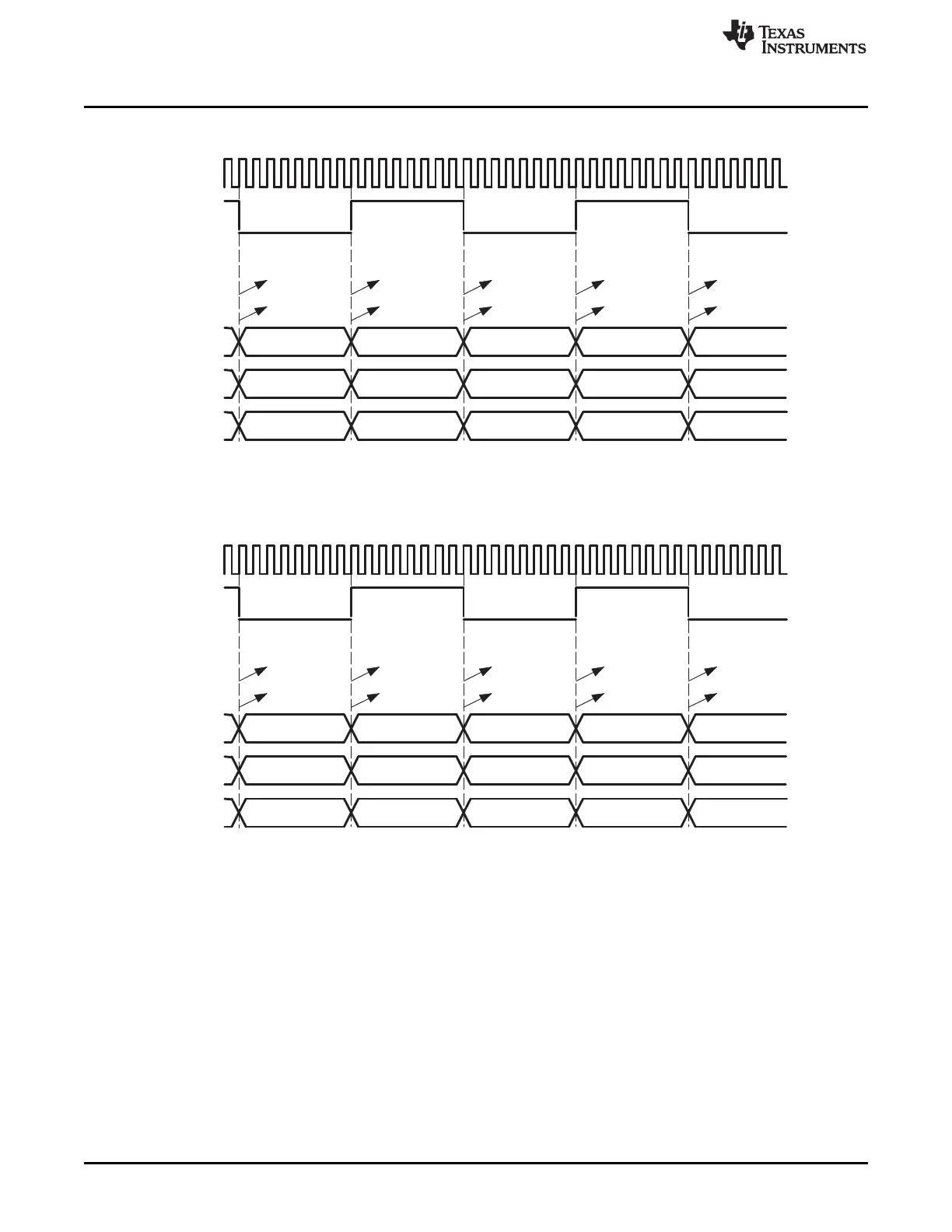LF1 RF1 LF2 RF2
CLK
FS
AXR4
LS1 RS1 LS2 RS2AXR5
C1 LFE1AXR6 C2 LFE2
AXEVTO
AREVTO
AXEVTE
AREVTE
AXEVTO
AREVTO
AXEVTE
AREVTE
AXEVTO
AREVTO
LF3
LS3
C3
Transmit
Receive
LF1 RF1 LF2 RF2
CLK
FS
AXR4
LS1 RS1 LS2 RS2AXR5
C1 LFE1AXR6 C2 LFE2
AXEVT
AREVT
AXEVT
AREVT
AXEVT
AREVT
AXEVT
AREVT
AXEVT
AREVT
LF3
LS3
C3
Transmit
Receive
Functional Description
www.ti.com
Figure 22-36. DMA Events in an Audio Example–Two Events (Scenario 1)
Figure 22-37. DMA Events in an Audio Example–Four Events (Scenario 2)
In scenario 1 (Figure 22-36), a DMA event AXEVT/AREVT is triggered on each time slot. In the example,
AXEVT is triggered for each of the transmit audio channel time slot (Time slot for channels LF, LS, and C;
and time slot for channels RF, RS, LFE). Similarly, AREVT is triggered for each of the receive audio
channel time slot. Scenario 1 allows for the use of a single DMA to transmit all audio channels, and a
single DMA to receive all audio channels.
In scenario 2 (Figure 22-37), two alternating DMA events are triggered for each time slot. In the example,
AXEVTE (even) is triggered for the time slot for the even audio channels (LF, LS, C) and AXEVTO (odd)
is triggered for the time slot for the odd audio channels (RF, RS, LFE). AXEVTO and AXEVTE alternate in
time. The same is true in the receive direction with the use of AREVTO and AREVTE. This scenario
allows for the use of two DMA channels (odd and even) to transmit all audio channels, and two DMA
channels to receive all audio channels.
3824
Multichannel Audio Serial Port (McASP) SPRUH73H–October 2011–Revised April 2013
Submit Documentation Feedback
Copyright © 2011–2013, Texas Instruments Incorporated

